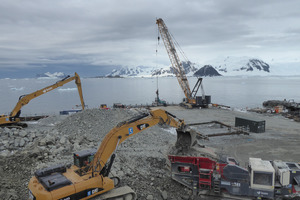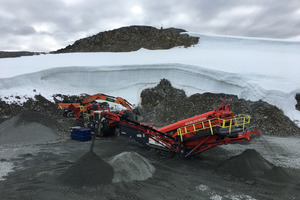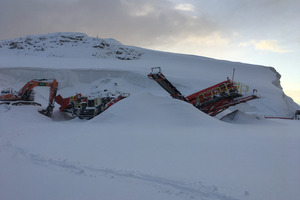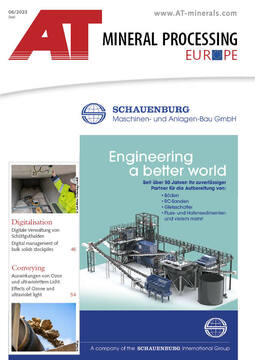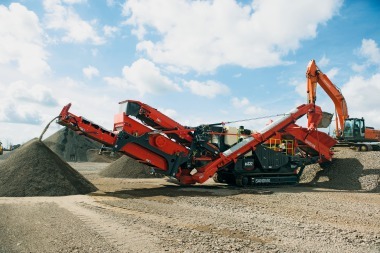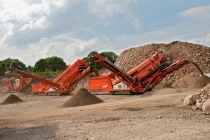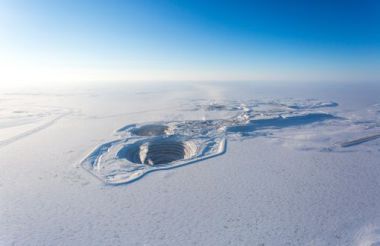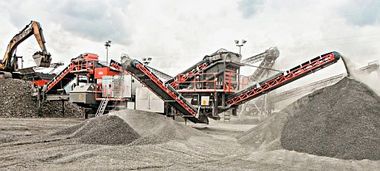Polar expedition for Sandvik mobile crushing and screening
In 2017 BAM were selected by the British Antarctic Survey (BAS) to partner for the Antarctic Infrastructure Modernization Programme (AIMP). This modernization project represents one of the largest UK Government investments in polar science infrastructure since the 1980s. Joined by BAS technical advisors, Ramboll and their designers Sweco, BAM were chosen by UK Research Innovation (UKRI) and National Environment Research Council (NERC), to partner with British Antarctic Survey for the £ 300 mn (€ 1.15 mn) infrastructure programme which will span over a seven-year framework.
A part of the project was the modernization of Rothera Research Station, BAS’ largest facility and a center for biological research and hub for supporting deep-field and air operations. This redevelopment includes a new science and operations facility, the Discovery Building, rebuild and update of the wharf together with the introduction of carbon reducing technology.
BAM were in need of a processing train to crush and screen the abrasive grandiorite material so it could be recycled and reused for construction purposes at the research station. Already familiar with Sandvik mobile equipment and experience using Sandvik Hydrocone crushing technology, Jan Cordon, Contracts Manager Drill and Blast at BAM Ritchies, and Harry McMullan, Quarry Manager for the project, contacted Sandvik Mobile crushing and screening.
Versatile operation
For this particular application and job at hand, a Sandvik QH332 Hydrocone crusher and QA335 Doublescreen were selected due to their versatility and performance capacity. The equipment is being used to crush the material down to make resurfacing material for an 800 m unpaved gravel runway. The sub 80 mm feed, which was crushed by a QJ341 jaw crusher previously on site, is processed to produce the following fractions; surface course 0 – 16 mm, base course 0 – 25 mm, levelling course 0 – 75 mm and sub-base < 100 mm.
The Sandvik QH332 is a tracked, self-propelled cone crusher designed for versatility, safety and high performance. Featuring the Sandvik Hydrocone crusher, it comes with a choice of six different crushing chambers and a variety of different bush settings. This ability to adapt to suit the needs of specific applications is one of the traits which Harry McMullan comments as to the reasons why they decided to invest in Sandvik. “The cone crushers have a wide choice of set-up with different concave and mantle configurations plus different throws, which allows the machine to be adjusted and configured to a wide range of products.”
In order to screen the material down and remove the fines so it can be reused for resurfacing the runway, a mobile screener was required. The QA335 was selected due to its flexibility and ability to accurately screen the products to the required sizes. The Doublescreen technology features two high velocity, angle adjustable screens, where both the primary and secondary screening angles can be adjusted to optimize screening performance and accuracy. With two independent double deck screens this provides a single machine capable of performing two screening processes.
Working in one of the world’s most harsh climates
Living and working in the Antarctic with temperatures ranging from 5°C to -40°C poses many environmental challenges. To ensure the Sandvik mobile units were able to operate in this extreme climate, all units were fitted with an arctic package. Harry McMullan says they have had no issues with the operation and they have been pleased with the performance: “Both machines have performed exceptionally well considering the harsh environment they are working in.” Due to the remote location and nature of the application, aftermarket support from Sandvik has been crucial in ensuring the success of this project. This has been vital both in terms of having technical service available when required and also the right spare parts and consumables on the ground when the need arises by placing a large stock order in advance.

